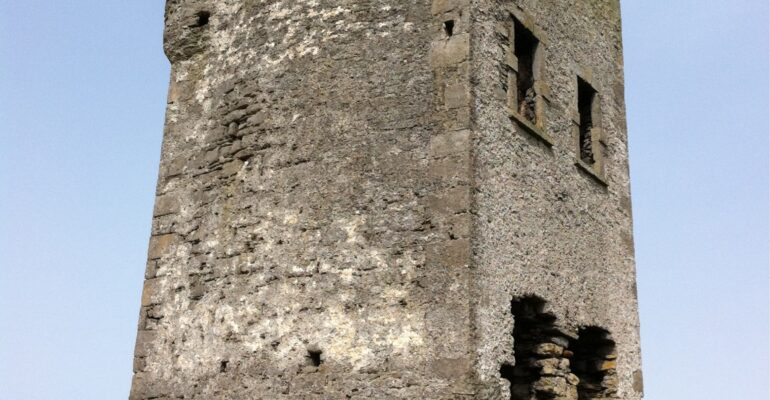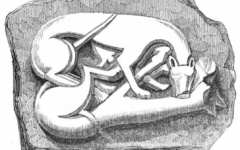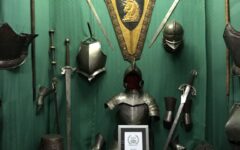Guardians of the Coast: The Story of Rathlee Signal Tower and Ireland’s Napoleonic ’10 Pound Castles’
July 10, 2025 2025-09-27 23:20Guardians of the Coast: The Story of Rathlee Signal Tower and Ireland’s Napoleonic ’10 Pound Castles’

Guardians of the Coast: The Story of Rathlee Signal Tower and Ireland’s Napoleonic ’10 Pound Castles’
Guardians of the Coast: The Story of Rathlee Signal Tower and Ireland’s Napoleonic ’10 Pound Castles’
Looking Out to Sea: An Irish Tale of Towers
Dotting the rugged coastlines of Ireland, mysterious towers stand sentinel, facing the unbroken horizon of the Atlantic Ocean. These “10 pound castles” are not medieval relics but the enduring reminders of a remarkable moment in Irish and European history, when war, innovation, and engineering converged to protect a nation.
A Time of Turmoil: Why Were These Towers Built?
The early 1800s was a period of great tension across Europe. The Napoleonic Wars were raging, and the British feared a French invasion of Ireland. After the failed French landing in support of the Irish Rebellion in 1798, the threat felt all too real.
In response, the British government undertook a huge project: to build a chain of coastal signal towers all around Ireland, intended to work as an early warning and communication system. Orders for construction began around 1804, and the goal was rapid completion—speed was crucial, given the possibility of immediate threat from the sea.
Building a Line of Defense: Timelines and Construction
- How many towers were constructed? No less than 81 signal towers were planned and most completed between 1804 and 1806, encircling the entire coastline from Cork to Donegal. Some estimates say over 80 were finished, but not all remain today.
- How long did it take? Remarkably, most towers were constructed in just two years, during an intense burst of activity starting in 1804. Construction was directed by military engineers, with design adapted to local terrain and materials.
- Who built them? The towers were commissioned by the British War Office and constructed by local Irish laborers under supervision of Royal Engineers. Supplies and manpower had to be rushed to remote headlands, often accessed by the narrowest lanes or by boat.
“10 Pound Castles”: Structure and Features
The nickname “10 pound castles” comes from the average pay of soldiers (£10 per year), but don’t be fooled—these were no ordinary barracks. Each tower was a marvel of practical military architecture:
- Location: Intentionally sited for maximum visibility—typically on high promontories, headlands, or cliffs.
- Design: Most towers were two stories, with thick stone walls (3–4 feet), few windows, and a flat roof for signaling.
- Garrison: Each operated with a small garrison—sergeant, corporals, and privates—sometimes with a detached cottage for families or support.
- Defensive features: Some towers had bartizans (turrets) or machicolations for defense and observation. Entrances were typically elevated for safety.
- Signal system: The towers used a visual signaling system—flags or balls by day, and lanterns or fires by night—to relay coded messages along the line at incredible speed.
Rathlee Signal Tower: Sligo’s Watchful Eye
Located near Easky in County Sligo, Rathlee Signal Tower is one of the most atmospheric survivors in the chain. What sets Rathlee apart is its design—it adopts features common to the “Mayo” style (round turrets, no attic level) and is set on a windswept point, with wide-ranging views both up and down the coast.
Rathlee is famed not only for its defensive history but also for its role in local folklore and its commanding presence on the landscape.
How Did the Signal Towers Work?
The system was ingenious for its day:
- Each tower was within sight of its neighbor, forming a communication chain.
- Messages were relayed using large wooden arms (semaphore), flags, or colored balls during the day; lanterns or fires at night.
- Codes were usually simple, but occasionally detailed messages could be sent in minutes from a remote outpost to military headquarters.
A soldier spotting a suspicious ship offshore would hoist a prearranged signal, passed along the network—like a visual telegraph—to alert authorities in major cities.
What Happened After Napoleon?
With the defeat of Napoleon at Waterloo in 1815, the threat of French invasion disappeared. Many towers were quickly abandoned, their military garrisons withdrawn or greatly reduced. Some towers fell into ruin, others were repurposed—used as police barracks, coastal guard posts, or even private homes.
Nevertheless, these towers remain a fascinating chapter in Ireland’s defensive history, a testament to rapid engineering and the strategic challenges of a pre-telegraph age.
Visit and Legacy
Today, towers like Rathlee serve as reminders of the tension and ingenuity of early 19th-century Ireland. Though often mistaken for ancient castles or lighthouses, their modern military purpose is clear to the historically curious visitor.
Their sturdy presence along the coast continues to inspire, reminding us of Ireland’s enduring connection to its dramatic shoreline and the ever-changing fortunes of its history.




